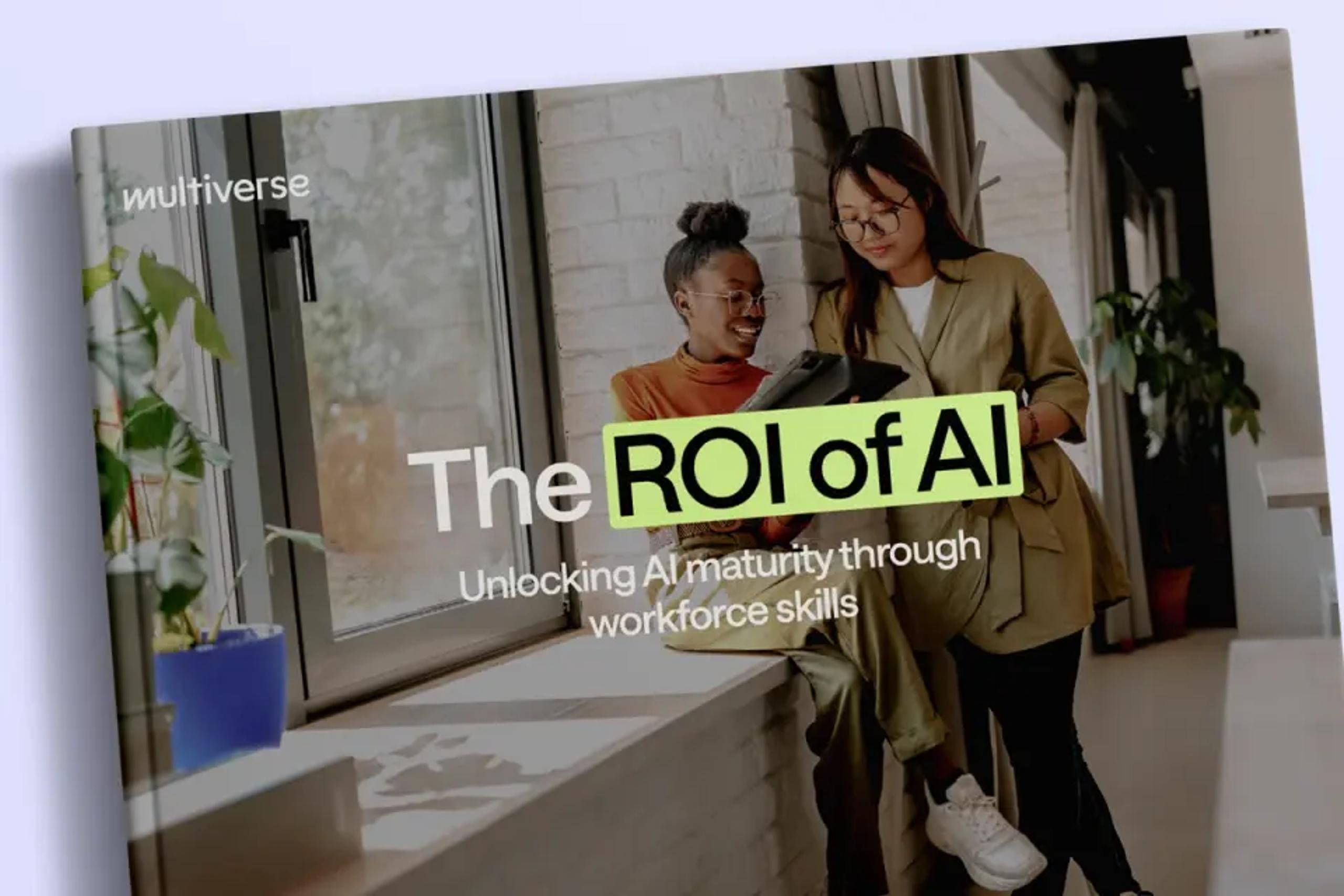Skills gaps are a common roadblock for businesses looking to drive growth with AI and other technologies. But what is a skills gap, and how do you identify yours?
The skills needed to thrive in today’s working environment look drastically different to those needed a decade ago.
As technology advances, new innovations like AI have transformed the skills that employees need most, resulting in skills gaps.
It’s a growing problem for business leaders: 48% say their organisation has significant skills gaps across key functional areas of the business. But it’s a solvable one – and organisations can get ahead by identifying, quantifying, and fixing skills gaps in their workforce.
In this article, we’ll unpack what a skills gap is and the different types that exist in the workplace. We’ll also dive into the data – exploring the digital skills gap statistics that demonstrate the scale of the challenge – and how leaders are adapting to meet demand.
Skills gap definition
A skills gap is the difference between the skills that employees possess and the skills that the business requires.
Today, they pose a significant challenge to businesses. According to a recent Multiverse report, 68% of business leaders anticipate gaps in key tech and data areas heading into 2030. Half (49%) believe these skills gaps will have a negative impact on key business performance metrics including profitability, employee retention, and customer satisfaction.
As a result, leaders are reordering their strategic priorities. Currently, they rank learning and development as their fifth largest priority, rising to fourth when looking ahead to 2030.
Read the full report for more insights and learn how to build the future workforce of 2030
Types of skills gaps
Our data suggests that organisations are currently struggling to address skills gaps across several business-critical areas, spanning both technical and soft skills.
Examples of technical skills gaps in the workplace
A technical skills gap is the difference between the technical skills employees have and those the business needs, especially relating to abilities in certain software, technologies, or processes.
Modern organisations are affected by skills gaps encompassing a range of specific technologies and platforms. Key areas where technical skill gaps are most acute include:
Artificial intelligence (AI)
AI skills gaps occur when workforces lack the skills to develop, deploy, or manage AI systems effectively. These include expertise in machine learning, data engineering, and solution design. Currently, leaders name AI as their most significant skills gap (45%).
Data
Data skills gaps occur when organisations lack the necessary skills to organise, store, and govern data effectively. 77% of leaders say data management is the skills gap most likely to persist into 2030.
Many organisations also have skills gaps when it comes to standard workplace productivity software. According to the Multiverse Skills Intelligence Report 2024:
- 57% of employees have basic or no Excel skills.
- 55% have no PowerBI or Tableau skills.
- 86% have no Python skills.
Cybersecurity
Cybersecurity skills gaps exist when organisations lack skills in protecting digital assets, data, or systems from cyber threats. Abilities in areas such as network security and threat detection are crucial to building a strong cyber posture, and business leaders name cybersecurity as their second largest skills gap (35%).
Cloud computing
Cloud computing skills gaps refer to a lack of skills for designing, managing, and optimising cloud-based infrastructures across platforms like AWS and Microsoft Azure. Leaders name cloud computing as their third largest skills gap (28%).
Examples of soft skills gaps in the workplace
Beyond technical abilities, workforces may also have skills gaps across soft skill areas. A soft skill gap is the difference between the non-technical abilities employees have and those the business needs.
A recent Multiverse survey on the power of on-the-job learning revealed that business leaders see soft skills as the largest predictor of potential – with leaders twice as likely to prioritise durable skills (64%) over degree results (27%) when assessing applicants for junior roles.
When asked to name the three most important soft skills their companies will need over the next five to 10 years, leaders cited the following skills gaps:
Critical thinking
Critical thinking skills gaps arise when employees lack the ability to analyse business problems and assess solutions effectively. 37% of business leaders consider it one of the top three most important skills their organisation will require.
Communication
Skills gaps in communication refer to the ability to clearly and effectively convey information, verbally or in writing. As remote and dispersed workforces become more common, 37% of business leaders name communication as a top priority.
Adaptability
Adaptability skills gaps emerge when employees struggle to adjust to new technologies or working processes. 35% of leaders see adaptability as a crucial skill for their future workforce.
Creativity
Creativity skills gaps are present when organisations lack the ability to generate innovative ideas or solve problems in novel ways. 34% of business leaders believe creativity will be critical for success over the next five to 10 years.
Why is it important for businesses to close skills gaps?
Over two-thirds (69%) of business leaders believe that their organisation will need different workforce skills to stay competitive by 2030. But to effectively implement new technologies like AI, workforces need new skills – both technical and soft.
When skills are missing, leaders see risks to business success. Half of leaders believe a lack of AI skills will negatively impact revenue growth (50%), productivity (50%) and profitability (49%).
How to identify and fix skills gaps
To maintain their competitive foothold, organisations can invest both in emerging technologies and the skills needed to implement them. 77% of leaders say they plan to increase training and development budgets by 2030. As a priority, 83% say their organisation is moving quickly to implement AI skills development.
Many choose to develop employee skills through upskilling or reskilling programmes. Upskilling refers to expanding existing skills and knowledge to stay competitive and relevant in the workplace, while reskilling is the process of building brand new skills and knowledge unrelated to your current skill set.
However, even though they recognise they have skills gaps, some businesses struggle to assess where those gaps are. As a result, decisions made to close gaps are often top-down and heavily influenced by guesswork or industry trends.
The Multiverse team can help map your skills gap with speed and precision. Book a consultation to identify your skills gaps today.






